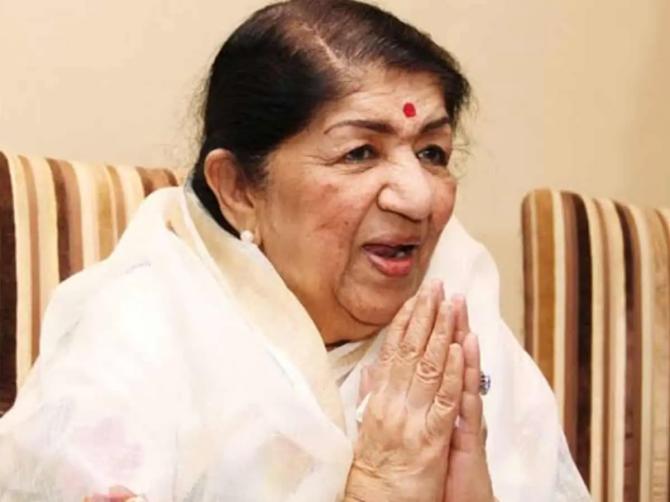Where Shamshad Begum was charging Rs 900 for a song, Lata was prepared to settle for Rs 50 as she came on the scene.
Raju Bharatan recalls yet another memorable incident from Lata Mangeshkar's incredible life.
- How Lata Mangeshkar Proved Dilip Kumar Wrong
- After Lata Arrived, Others Melted Away
- When Lataji Stunned Noorjehan

How many sacrifices had the Wrigleys' gum-chewing Lata made since to attain this unique position! Lata, early in her career, loved to sport jeans but could do so only in the privacy of her hotel room in faraway America.
That white sari became a status symbol. Where Shamshad Begum was charging Rs 900 for a song, Lata was prepared to settle for Rs 50 as she came on the scene.
Such however was her ghost voice magnetism, by 1949, that Singing Star Suraiya requested Composer C Ramchandra to employ the Mangeshkar girl as her playback in Duniya -- so that she had more time to be with her Dev (Anand)!
Also, what a flutter was caused, in our composing community, as Baburao Patel's Filmindia prominently announced, on its cover, Lata Mangeshkar as the music director of M V Raman's Jhooki Jhooki Ankhiyan.
In the end, Lata chose to remain just that -- a singer. Today, no matter what be her sister Asha Bhosle's pull with the young, the Lata niche is secure as the 'Nightingale on the tallest branch' -- to quote famed dancer Padma Subrahmanyam.
Lata might hum her bete noire O P Nayyar's Jaayeeye aap kahaan jaayenge in the interior of her Prabhu Kunj home.
But in public, when she plays OP's Yeh hai reshmi zulfon ka andheraa on Vividh Bharati, she does so saying, that it is Asha's sultry quality singing that is making her do so!
The Asha-flaunting Omkar Prasad Nayyar alone fought Lata to the end -- a Lata 'arriving' in Kolhapuri chappals, but staying on for Dilip Kumar to discover that Kolhapuri mutton to be our doyenne's favourite Indian dish.
The late Raju Bharatan was Cinema Editor of The Illustrated Weekly Of India . He was the author of Lata Mangeshkar: A Biography, priced at Rs 295, a book now out of print.
This feature was first posted on Rediff.com in July 7, 2008.











